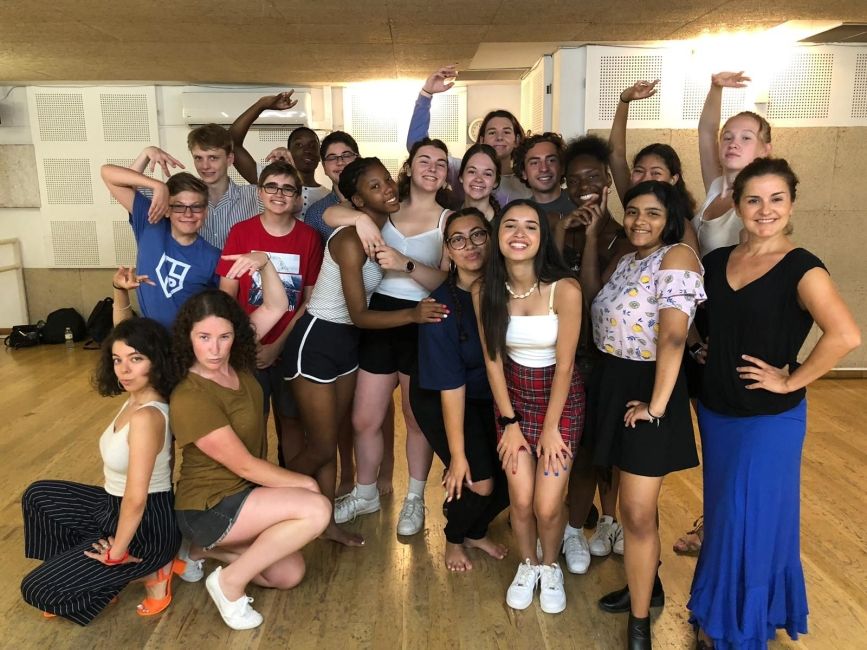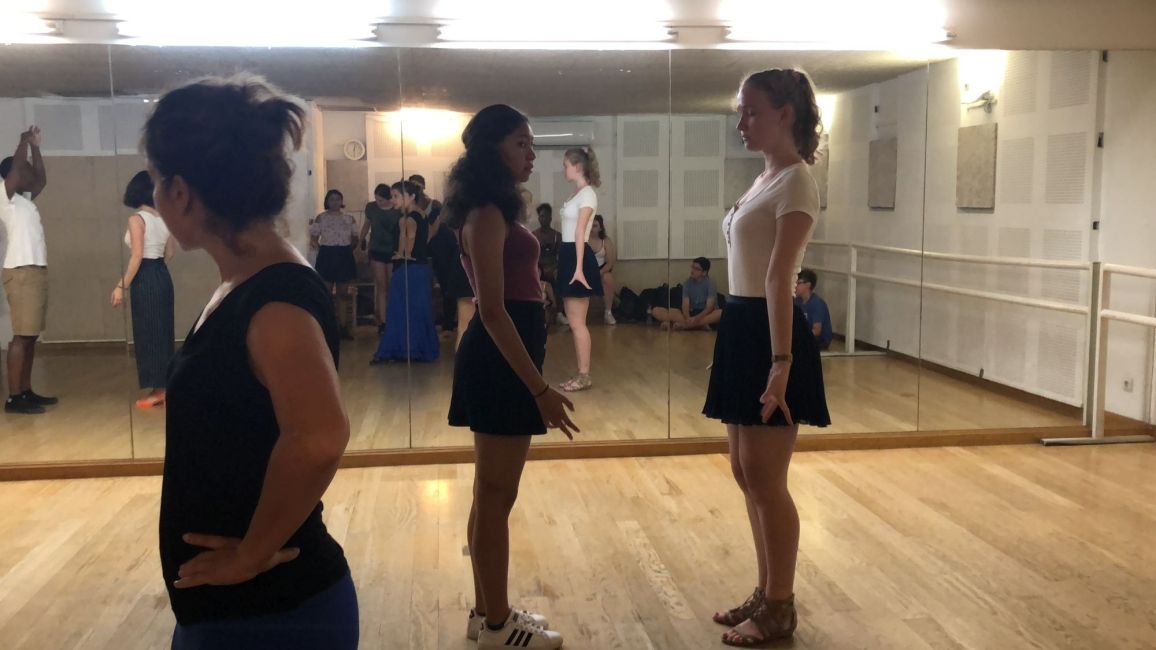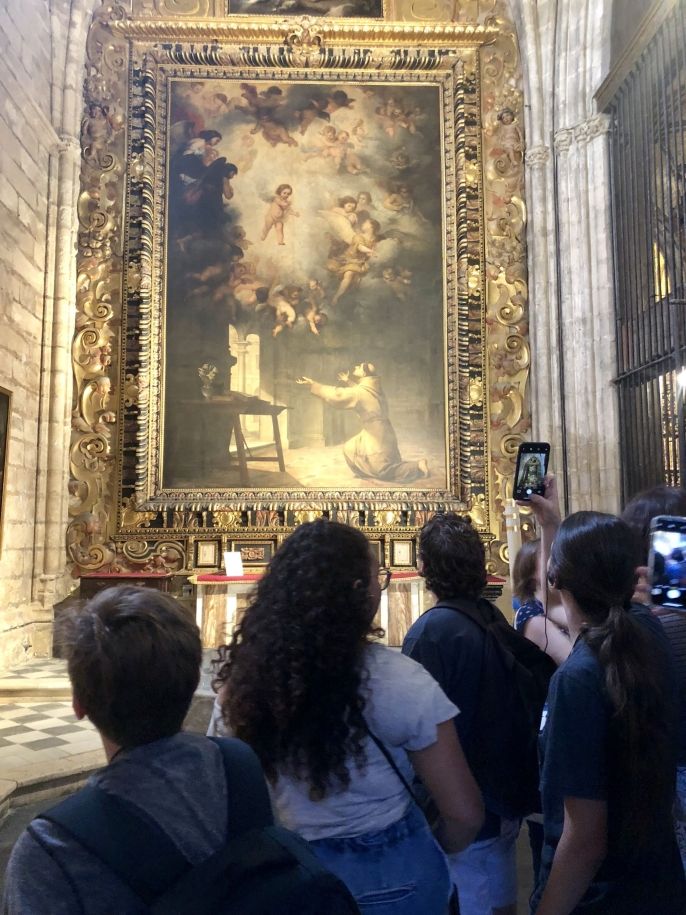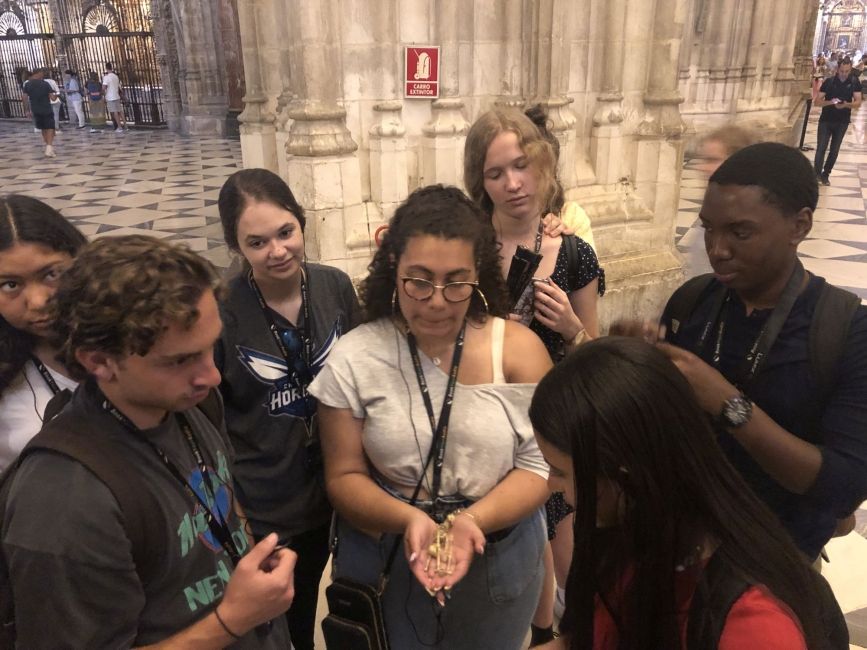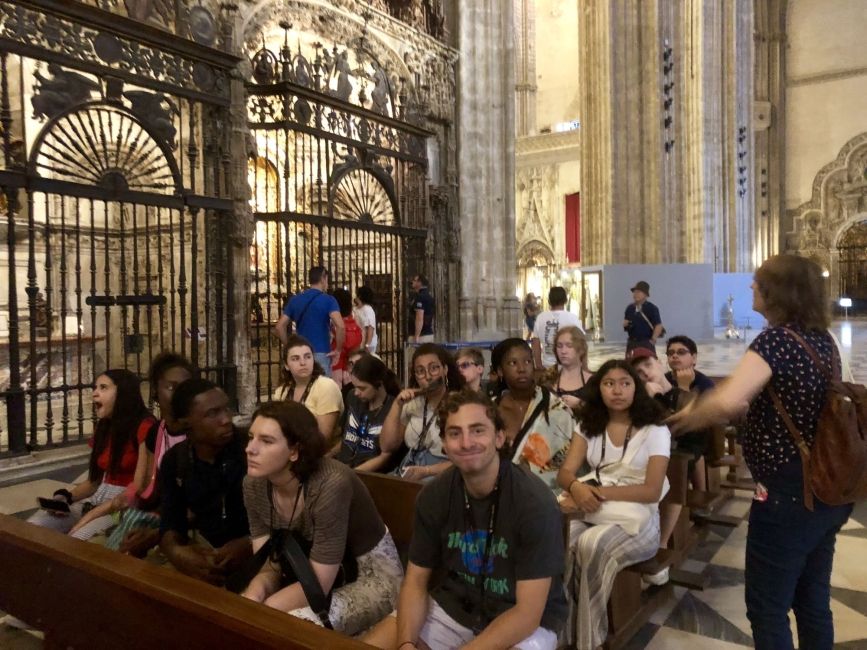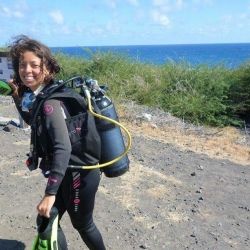A Dance Through History
While the afternoons are full of new projects. Group work, recording footage, writing, editing and giving feeback. Mornings are where we get to know Sevilla's history and wonders.
We walked out of our flamenco class feeling like true bailaoras y bailaores. Not only were we able to learn the different claps and stomps in the tradition of flamenco. We learned a choreography that couples traditionally dance during Feria de Abril. Feria, for short, is tradionally held two weeks after Semana Santa, and has been a long standing tradition of Andalucia since the 1800's. Tourists, as well as, locals participate wearing the traditional costumes of Traje Corto or Faralaes. The festival consists of parades, bull fights and a lot of dancing. Flamenco class along with learning the historic ritual of bullfighting the previous day have us feeling ready to come back next year to participate in Feria!
A visit to Sevilla cannot be complete without experiencing the Cathedral of Sevilla. A UNESCO World Heritage site and officially the largest cathedral in the world. We were able to witness, again, history right before our eyes. The space which was originally a mosque, turned into a cathedral. The visible differences in architecture, from Gothic to Baroque to Rennaissance were helpful to understand the transition from Medieval Period to The Rennaisance. We learned about the deisgn of the Gothic arch and the importance of it in this cathedral.
Within this cathedral we were able to revel in the magnificense of the paintings of Murillo, the most influential Baroque painter of his time. We also got the opportunity to see where Christopher Colombus' remains are kept. We really enjoy how these tours teach us not only about the history of Seville, but of the world.
Check back in soon to hear about our adventures this past weekend in Granada!
Related Posts
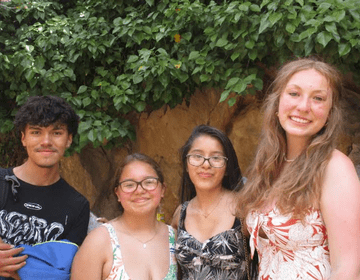
Group Adventures in Alicante
It’s truly heartwarming to witness the friendships and bonds that form so quickly during our high school summer abroad program in Alicante, Spain. Even though the students have known each... keep reading
How to Talk to Your Family and Friends About Your Summer Abroad in Palma
This blog post offers tips for Global Navigators on how to share their summer abroad experience in Palma with friends and family. From focusing on meaningful stories and journaling daily to staying connected and encouraging others to apply, it helps students reflect on their journey and express how it shaped them. It ends with a creative call to action—writing a letter to their pre-Mallorca self or sharing a favorite photo and story—to keep the experience alive even after returning home.
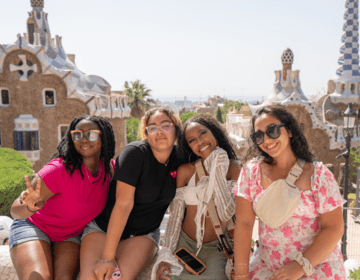
Student Spotlight: My Summer in Spain by Chisom Eke
A summer in Spain was something I once believed I would never experience—until now. From the Bronx to Barcelona, learning the cultural differences has been quite the ride. When I... keep reading
